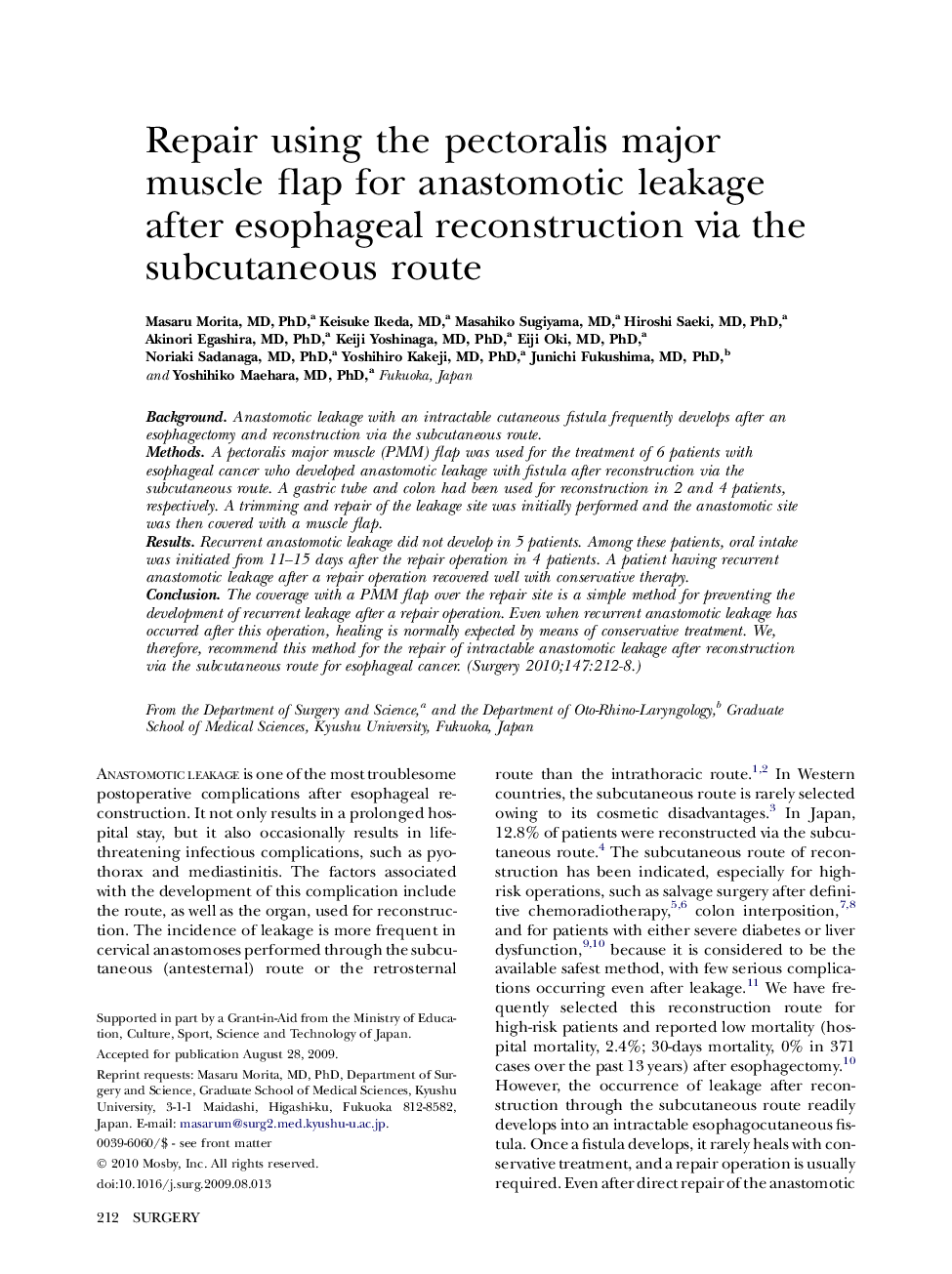| Article ID | Journal | Published Year | Pages | File Type |
|---|---|---|---|---|
| 4308002 | Surgery | 2010 | 7 Pages |
BackgroundAnastomotic leakage with an intractable cutaneous fistula frequently develops after an esophagectomy and reconstruction via the subcutaneous route.MethodsA pectoralis major muscle (PMM) flap was used for the treatment of 6 patients with esophageal cancer who developed anastomotic leakage with fistula after reconstruction via the subcutaneous route. A gastric tube and colon had been used for reconstruction in 2 and 4 patients, respectively. A trimming and repair of the leakage site was initially performed and the anastomotic site was then covered with a muscle flap.ResultsRecurrent anastomotic leakage did not develop in 5 patients. Among these patients, oral intake was initiated from 11–15 days after the repair operation in 4 patients. A patient having recurrent anastomotic leakage after a repair operation recovered well with conservative therapy.ConclusionThe coverage with a PMM flap over the repair site is a simple method for preventing the development of recurrent leakage after a repair operation. Even when recurrent anastomotic leakage has occurred after this operation, healing is normally expected by means of conservative treatment. We, therefore, recommend this method for the repair of intractable anastomotic leakage after reconstruction via the subcutaneous route for esophageal cancer.
